What medicine helps earaches. Effective Medicines and Treatments for Earaches: A Comprehensive Guide
What are the best medicines for earaches. How can ear infections be diagnosed. What treatment options are available for middle ear infections. When should antibiotics be used for ear infections. How can pain from ear infections be managed effectively.
Understanding Ear Infections: Types and Diagnosis
Ear infections, particularly those affecting the middle ear, are common ailments that can cause significant discomfort. To effectively treat earaches, it’s crucial to understand the different types of ear infections and how they are diagnosed.
Types of Ear Infections
- Acute otitis media: The most common type, characterized by sudden onset of symptoms and fluid in the middle ear
- Otitis media with effusion: Presence of fluid in the middle ear without signs of acute infection
- Chronic suppurative otitis media: Long-term infection resulting in eardrum perforation and drainage
Diagnostic Techniques
Diagnosing ear infections typically involves a combination of symptom assessment and physical examination. Healthcare providers employ various tools and techniques to accurately identify the presence and type of ear infection:
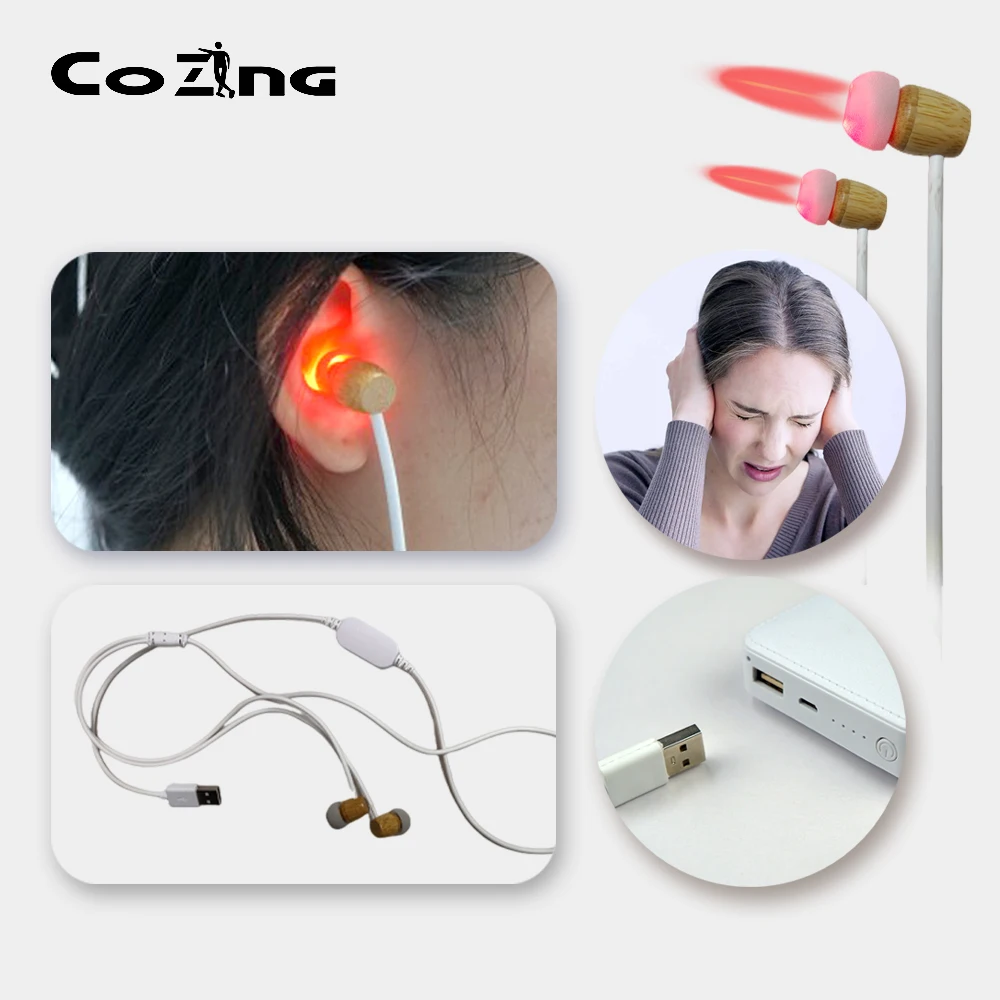
- Otoscope examination: A lighted instrument used to visualize the ear canal and eardrum
- Pneumatic otoscope: Allows assessment of eardrum mobility by applying gentle air pressure
- Tympanometry: Measures eardrum movement and middle ear pressure
- Acoustic reflectometry: Evaluates the amount of sound reflected by the eardrum
- Tympanocentesis: A rare procedure involving fluid extraction from the middle ear for testing
Can ear infections be diagnosed without specialized equipment? In many cases, experienced healthcare providers can diagnose ear infections based on symptoms and a basic physical examination. However, specialized tools like the pneumatic otoscope can provide more definitive evidence of middle ear fluid accumulation.
The Wait-and-See Approach: When to Consider It
Not all ear infections require immediate antibiotic treatment. The American Academy of Pediatrics and the American Academy of Family Physicians recommend a wait-and-see approach in certain situations:
- Children 6 to 23 months with mild pain in one ear for less than 48 hours and temperature below 102.2째F (39째C)
- Children 24 months and older with mild pain in one or both ears for less than 48 hours and temperature below 102.2째F (39째C)
Is the wait-and-see approach safe for all ear infections? This approach is not suitable for severe infections or in children with certain risk factors. Always consult a healthcare provider to determine the most appropriate course of action for each individual case.
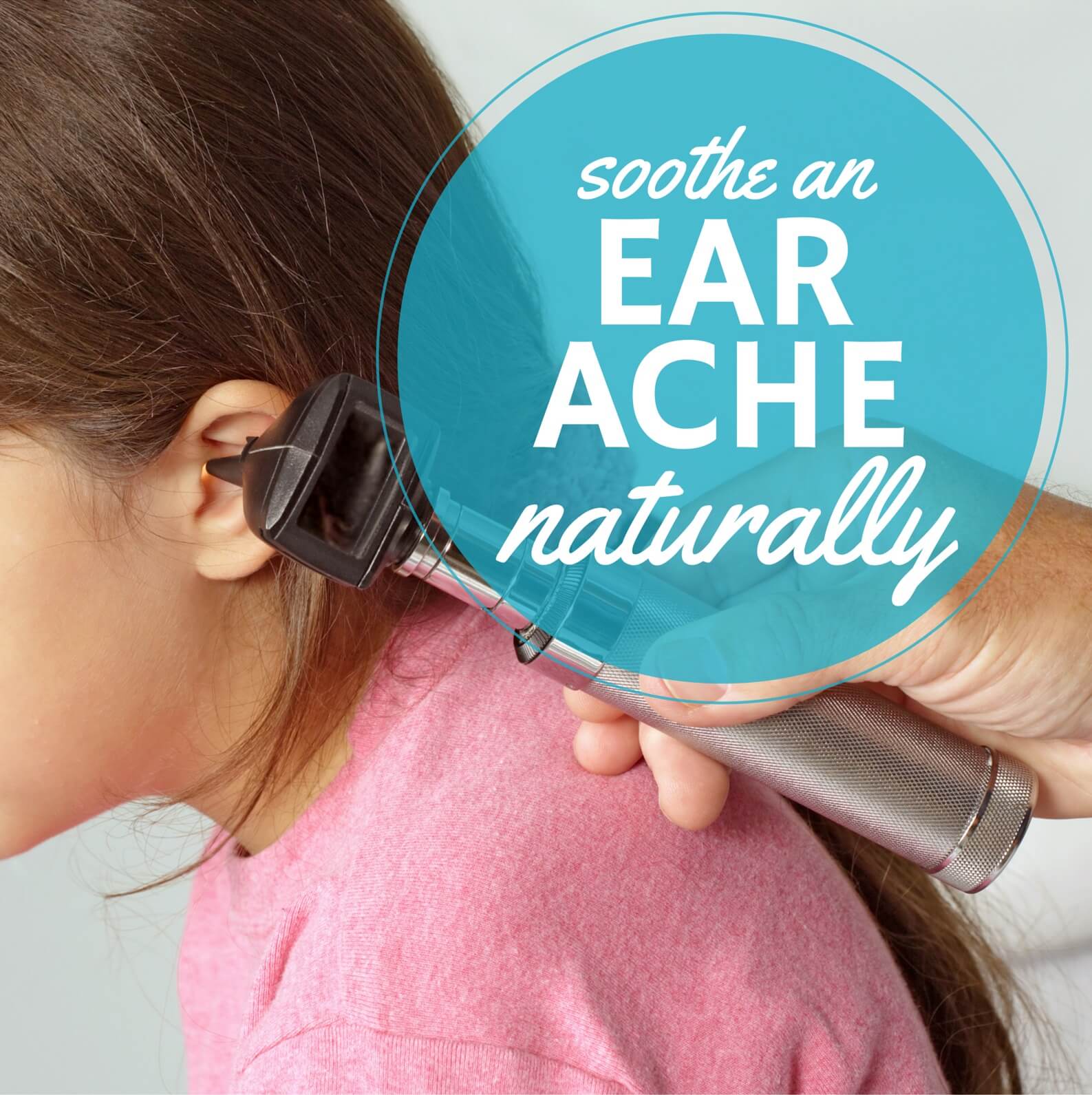
Effective Pain Management Strategies for Earaches
Managing pain is a crucial aspect of treating ear infections, especially when following a wait-and-see approach. Here are some effective strategies for alleviating earache discomfort:
Over-the-Counter Pain Medications
Acetaminophen (Tylenol) and ibuprofen (Advil, Motrin IB) are commonly recommended for pain relief. However, it’s essential to use these medications as directed and be aware of potential risks:
- Follow dosage instructions carefully
- Avoid aspirin in children and teenagers due to the risk of Reye’s syndrome
- Consult a healthcare provider if you have concerns about medication use
Anesthetic Ear Drops
Topical anesthetic drops can provide localized pain relief for ear infections. These drops are only suitable for use when the eardrum is intact, without holes or tears.
Are home remedies effective for managing ear pain? While some home remedies like warm compresses may provide temporary relief, it’s important to consult a healthcare provider for proper diagnosis and treatment of ear infections.
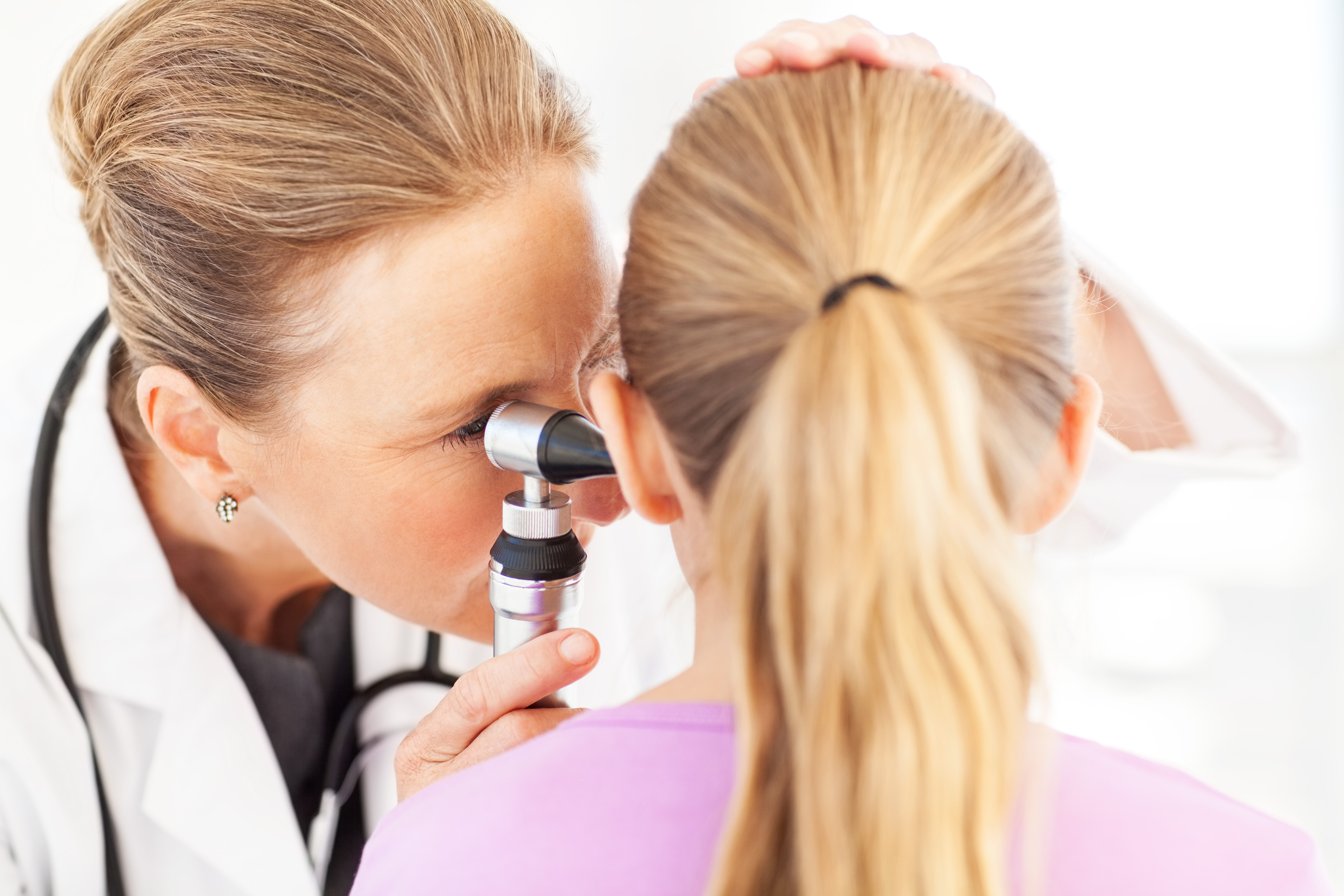
Antibiotic Therapy: When Is It Necessary?
Antibiotic treatment for ear infections is not always necessary, but it may be recommended in certain situations. Understanding when antibiotics are appropriate can help prevent overuse and reduce the risk of antibiotic resistance.
Indications for Antibiotic Therapy
- Severe symptoms or high fever
- Young children (under 6 months) with confirmed ear infections
- Infections that persist or worsen after 48-72 hours of observation
- Presence of certain risk factors or underlying health conditions
Do all ear infections require antibiotics? No, many ear infections, especially those caused by viruses, can resolve on their own without antibiotic treatment. Healthcare providers carefully weigh the potential benefits and risks of antibiotic use for each individual case.
Choosing the Right Antibiotic: Factors to Consider
When antibiotic therapy is deemed necessary for an ear infection, selecting the most appropriate medication is crucial. Healthcare providers consider various factors when prescribing antibiotics:

Common Antibiotics for Ear Infections
- Amoxicillin: Often the first-line treatment for uncomplicated ear infections
- Amoxicillin-clavulanate: Used when amoxicillin-resistant bacteria are suspected
- Cefdinir, cefuroxime, or cefpodoxime: Alternative options for penicillin-allergic patients
- Azithromycin or clarithromycin: Sometimes used in specific cases
Factors Influencing Antibiotic Selection
- Patient age and weight
- Severity of infection
- Local patterns of antibiotic resistance
- Presence of allergies or other medical conditions
- Previous antibiotic use
How long should antibiotic treatment last for ear infections? The duration of antibiotic therapy varies depending on the specific medication and individual factors. Typically, treatment courses range from 5 to 10 days, but it’s essential to complete the entire prescribed course even if symptoms improve earlier.
Managing Recurrent and Chronic Ear Infections
Some individuals, particularly children, may experience recurrent or chronic ear infections. These cases often require a more comprehensive approach to management and may involve additional interventions.

Strategies for Recurrent Infections
- Prophylactic antibiotic therapy
- Identification and management of risk factors (e.g., allergies, secondhand smoke exposure)
- Consideration of surgical interventions (e.g., tympanostomy tubes)
Tympanostomy Tubes
Tympanostomy tubes, also known as ear tubes or ventilation tubes, are small devices surgically inserted into the eardrum to allow fluid drainage and equalize pressure in the middle ear. They may be recommended for children with:
- Recurrent acute otitis media (3 or more episodes in 6 months or 4 or more in a year)
- Chronic otitis media with effusion lasting more than 3 months
- Speech or language delays associated with hearing loss from chronic ear infections
Are tympanostomy tubes a permanent solution for ear infections? While effective in managing recurrent infections, tympanostomy tubes are typically temporary. They usually fall out on their own within 6 to 18 months, and most children outgrow the need for tubes as they get older.
Complementary and Alternative Approaches to Ear Infection Management
While conventional medical treatments remain the primary approach for managing ear infections, some individuals explore complementary and alternative methods. It’s important to note that the effectiveness of these approaches varies, and they should not replace professional medical advice.

Potential Complementary Approaches
- Xylitol: A natural sugar substitute that may help prevent bacterial growth
- Probiotics: Some studies suggest potential benefits in reducing the risk of ear infections
- Herbal remedies: Certain herbs like garlic and mullein have traditional uses for ear health
- Chiropractic care: Some practitioners claim benefits for ear infection management
Are alternative treatments safe for ear infections? While some complementary approaches may offer benefits, it’s crucial to consult with a healthcare provider before trying any alternative treatments, especially for children. Some methods may be ineffective or potentially harmful if used inappropriately.
Preventing Ear Infections: Lifestyle and Environmental Factors
While not all ear infections can be prevented, certain lifestyle modifications and environmental changes may help reduce the risk of developing these painful conditions.
Preventive Strategies
- Breastfeeding infants for at least six months may provide protective antibodies
- Avoiding secondhand smoke exposure
- Practicing good hand hygiene to reduce the spread of infectious agents
- Keeping vaccinations up to date, including influenza and pneumococcal vaccines
- Avoiding bottle-feeding while lying down
- Managing allergies effectively
- Avoiding prolonged pacifier use in older children
Can dietary changes help prevent ear infections? While no specific diet has been proven to prevent ear infections, maintaining overall good nutrition and a healthy immune system may help reduce the risk of various infections, including those affecting the ears.

In conclusion, managing earaches and ear infections involves a multifaceted approach, combining accurate diagnosis, appropriate treatment selection, and preventive measures. By understanding the various aspects of ear infection management, individuals can work effectively with healthcare providers to alleviate discomfort and promote ear health. Remember that each case is unique, and personalized medical advice is essential for optimal care and outcomes.
Ear infection (middle ear) – Diagnosis & treatment
Diagnosis
Your doctor can usually diagnose an ear infection or another condition based on the symptoms you describe and an exam. The doctor will likely use a lighted instrument (an otoscope) to look at the ears, throat and nasal passage. He or she will also likely listen to your child breathe with a stethoscope.
Pneumatic otoscope
An instrument called a pneumatic otoscope is often the only specialized tool a doctor needs to diagnose an ear infection. This instrument enables the doctor to look in the ear and judge whether there is fluid behind the eardrum. With the pneumatic otoscope, the doctor gently puffs air against the eardrum. Normally, this puff of air would cause the eardrum to move. If the middle ear is filled with fluid, your doctor will observe little to no movement of the eardrum.
Additional tests
Your doctor may perform other tests if there is any doubt about a diagnosis, if the condition hasn’t responded to previous treatments, or if there are other long-term or serious problems.
- Tympanometry. This test measures the movement of the eardrum. The device, which seals off the ear canal, adjusts air pressure in the canal, which causes the eardrum to move. The device measures how well the eardrum moves and provides an indirect measure of pressure within the middle ear.
- Acoustic reflectometry. This test measures how much sound is reflected back from the eardrum — an indirect measure of fluids in the middle ear. Normally, the eardrum absorbs most of the sound. However, the more pressure there is from fluid in the middle ear, the more sound the eardrum will reflect.
- Tympanocentesis. Rarely, a doctor may use a tiny tube that pierces the eardrum to drain fluid from the middle ear — a procedure called tympanocentesis. The fluid is tested for viruses and bacteria. This can be helpful if an infection hasn’t responded well to previous treatments.
- Other tests. If your child has had multiple ear infections or fluid buildup in the middle ear, your doctor may refer you to a hearing specialist (audiologist), speech therapist or developmental therapist for tests of hearing, speech skills, language comprehension or developmental abilities.

What a diagnosis means
- Acute otitis media. The diagnosis of “ear infection” is generally shorthand for acute otitis media. Your doctor likely makes this diagnosis if he or she sees signs of fluid in the middle ear, if there are signs or symptoms of an infection, and if symptoms started relatively suddenly.
- Otitis media with effusion. If the diagnosis is otitis media with effusion, the doctor has found evidence of fluid in the middle ear, but there are presently no signs or symptoms of infection.
- Chronic suppurative otitis media. If the doctor makes a diagnosis of chronic suppurative otitis media, he or she has found that a long-term ear infection resulted in tearing of the eardrum. This is usually associated with pus draining from the ear.
Treatment
Some ear infections resolve without antibiotic treatment. What’s best for your child depends on many factors, including your child’s age and the severity of symptoms.
A wait-and-see approach
Symptoms of ear infections usually improve within the first couple of days, and most infections clear up on their own within one to two weeks without any treatment. The American Academy of Pediatrics and the American Academy of Family Physicians recommend a wait-and-see approach as one option for:
- Children 6 to 23 months with mild middle ear pain in one ear for less than 48 hours and a temperature less than 102.2 F (39 C)
- Children 24 months and older with mild middle ear pain in one or both ears for less than 48 hours and a temperature less than 102.2 F (39 C)
Some evidence suggests that treatment with antibiotics might be helpful for certain children with ear infections. On the other hand, using antibiotics too often can cause bacteria to become resistant to the medicine. Talk with your doctor about the potential benefits and risks of using antibiotics.
Managing pain
Your doctor will advise you on treatments to lessen pain from an ear infection. These may include the following:
These may include the following:
- Pain medication. Your doctor may advise the use of over-the-counter acetaminophen (Tylenol, others) or ibuprofen (Advil, Motrin IB, others) to relieve pain. Use the drugs as directed on the label. Use caution when giving aspirin to children or teenagers. Children and teenagers recovering from chickenpox or flu-like symptoms should never take aspirin because aspirin has been linked with Reye’s syndrome. Talk to your doctor if you have concerns.
- Anesthetic drops. These may be used to relieve pain if the eardrum doesn’t have a hole or tear in it.
Antibiotic therapy
After an initial observation period, your doctor may recommend antibiotic treatment for an ear infection in the following situations:
- Children 6 months and older with moderate to severe ear pain in one or both ears for at least 48 hours or a temperature of 102.2 F (39 C) or higher
- Children 6 to 23 months with mild middle ear pain in one or both ears for less than 48 hours and a temperature less than 102.
 2 F (39 C)
2 F (39 C) - Children 24 months and older with mild middle ear pain in one or both ears for less than 48 hours and a temperature less than 102.2 F (39 C)
Children younger than 6 months of age with confirmed acute otitis media are more likely to be treated with antibiotics without the initial observational waiting time.
Even after symptoms have improved, be sure to use the antibiotic as directed. Failing to take all the medicine can lead to recurring infection and resistance of bacteria to antibiotic medications. Talk with your doctor or pharmacist about what to do if you accidentally miss a dose.
Ear tubes
If your child has certain conditions, your child’s doctor may recommend a procedure to drain fluid from the middle ear. If your child has repeated, long-term ear infections (chronic otitis media) or continuous fluid buildup in the ear after an infection cleared up (otitis media with effusion), your child’s doctor may suggest this procedure.
During an outpatient surgical procedure called a myringotomy, a surgeon creates a tiny hole in the eardrum that enables him or her to suction fluids out of the middle ear. A tiny tube (tympanostomy tube) is placed in the opening to help ventilate the middle ear and prevent the buildup of more fluids. Some tubes are intended to stay in place for four to 18 months and then fall out on their own. Other tubes are designed to stay in longer and may need to be surgically removed.
A tiny tube (tympanostomy tube) is placed in the opening to help ventilate the middle ear and prevent the buildup of more fluids. Some tubes are intended to stay in place for four to 18 months and then fall out on their own. Other tubes are designed to stay in longer and may need to be surgically removed.
The eardrum usually closes up again after the tube falls out or is removed.
Tympanostomy tubes
Ear tubes (tympanostomy tubes, ventilation tubes, pressure equalization tubes) are tiny cylinders, usually made of plastic or metal, that are surgically inserted into the eardrum. An ear tube creates an airway that ventilates the middle ear and prevents the accumulation of fluids behind the eardrum.
Treatment for chronic suppurative otitis media
Chronic infection that results in a hole or tear in the eardrum — called chronic suppurative otitis media — is difficult to treat. It’s often treated with antibiotics administered as drops. You may receive instructions on how to suction fluids out through the ear canal before administering drops.
Monitoring
Children who have frequent infections or who have persistent fluid in the middle ear will need to be monitored closely. Talk to your doctor about how often you should schedule follow-up appointments. Your doctor may recommend regular hearing and language tests.
More Information
Clinical trials
Explore Mayo Clinic studies testing new treatments, interventions and tests as a means to prevent, detect, treat or manage this condition.
Preparing for your appointment
You’ll likely begin by seeing your family doctor or your child’s pediatrician. You may be referred to a specialist in ear, nose and throat (ENT) disorders if the problem has persisted for some time, is not responding to treatment or has occurred frequently.
If your child is old enough to respond, before your appointment talk to the child about questions the doctor may ask and be prepared to answer questions on behalf of your child. Questions for adults will address most of the same issues.
Questions for adults will address most of the same issues.
- What signs or symptoms have you noticed?
- When did the symptoms begin?
- Is there ear pain? How would you describe the pain — mild, moderate or severe?
- Have you observed possible signs of pain in your infant or toddler, such as ear pulling, difficulty sleeping or unusual irritability?
- Has your child had a fever?
- Has there been any discharge from the ear? Is the discharge clear, cloudy or bloody?
- Have you observed any hearing impairment? Does your child respond to quiet sounds? Does your older child ask “What?” frequently?
- Has your child recently had a cold, flu or other respiratory symptoms?
- Does your child have seasonal allergies?
- Has your child had an ear infection in the past? When?
- Is your child allergic to any medication, such as amoxicillin?
Ear Infection Treatments, Antibiotics, & Medications
Written by WebMD Editorial Contributors
- What Is My Doctor Looking For?
- Treatments
- Pain Relief
- Antibiotics
- Drainage
- Natural Remedies
- More
If you care for children, you likely know already how often they come down with earaches. Adults get them, too, but youngsters have them much more often. That’s because they don’t fight off viruses and bacteria as well, and their little ears aren’t good at draining fluids yet.
Adults get them, too, but youngsters have them much more often. That’s because they don’t fight off viruses and bacteria as well, and their little ears aren’t good at draining fluids yet.
You or your child may have a sore throat, stuffy nose, or fever along with an earache. These are signs of a possible infection.
Call your doctor so she can find out for sure what’s going on. If it is an infection, she can recommend the best treatment for your case.
Your doctor will ask you about any symptoms you’ve had. Be sure to come to the office with any notes you might need and questions on your mind.
She will look at the eardrum with an instrument called an otoscope for signs of infection. This is a tough task with a fussy infant, so be ready to help calm the little one if it’s your child with the earache.
Signs of infection include a red eardrum or a bulging eardrum with fluid behind it. The fluid may be thin like during a cold, or thick like pus. It is located in the middle ear, just behind the ear drum. Otitis media means inflammation of the middle ear. A puffer attached to the otoscope blows air to see if your thin eardrum moves. With fluid in the middle ear, the eardrum is more rigid and doesn’t move back and forth.
Otitis media means inflammation of the middle ear. A puffer attached to the otoscope blows air to see if your thin eardrum moves. With fluid in the middle ear, the eardrum is more rigid and doesn’t move back and forth.
She might also look for signs of infection with another instrument. It’s called a tympanometer, and it uses sound and air pressure to check for fluid in the middle ear.
Often, a virus causes an ear infection, in which case antibiotics won’t help. If, based on the history, your doctor suspects that bacteria may have caused the infection, she may prescribe an antibiotic.
You may also talk to your doctor about things you can do at home.
If a virus or bacteria are causing the infection and you have to wait for it to get better, you don’t need to live with the pain.
Your doctor may recommend a pain reliever, typically acetaminophen (Tylenol) or ibuprofen (Advil, Motrin), which also helps reduce a fever. Aspirin should be avoided in children because of the threat of Reye’s syndrome, a rare condition that can cause swelling in the brain or liver.
Pain can also be reduced by using low heat from a heating pad. Be very careful using a heating pad with children.
If your doctor decides to go with antibiotics, follow all the instructions. Take all of the doses even if you or your child are feeling better. Call your doctor or pharmacist if you skip a dose or feel sick from the medicine.
If you don’t take the whole course, your infection could come back and become resistant to more treatments.
If an infection causes serious complications, fluid remains in the ear for a long time, or your child has ear infections that keep coming back, your doctor might want to do a procedure called a myringotomy.
She creates a small hole in the eardrum so fluids such as water, blood, or pus can drain out. In many cases, she will put in a tube so it won’t get backed up again.
The tube, which will usually fall out on its own in about 6 to 18 months, lets the fluid out and air flow through to keep the middle ear dry. Tubes also:
- Reduce pain
- Improve hearing
- Cut down on the number of infections your child may have
When younger children get these ear tubes, it’s surgery. They will need to go to the hospital and take something to sleep during the procedure, which usually lasts about 15 minutes.
They will need to go to the hospital and take something to sleep during the procedure, which usually lasts about 15 minutes.
Older children and adults can have it done while they’re awake. For them, it can be done in their doctor’s office.
This surgery rarely leads to infection or scarring and usually prevents long-term symptoms. If the tubes come out and the infections return, talk to your doctor about more treatments.
Doctors generally don’t consider the removal of tonsils helpful for ear infections.
You can do things at home to ease your symptoms. Talk to your doctor first about these tips:
Warmth: You may find a heated compress brings comfort.
Feedings: If you feed your baby with a bottle, do it standing up. Don’t put your infant to bed with one. Try to take your child off it as soon as the doctor thinks he’s ready.
Gargling: In older children or adults, salt water helps soothe a raw throat and may help clear the Eustachian tubes.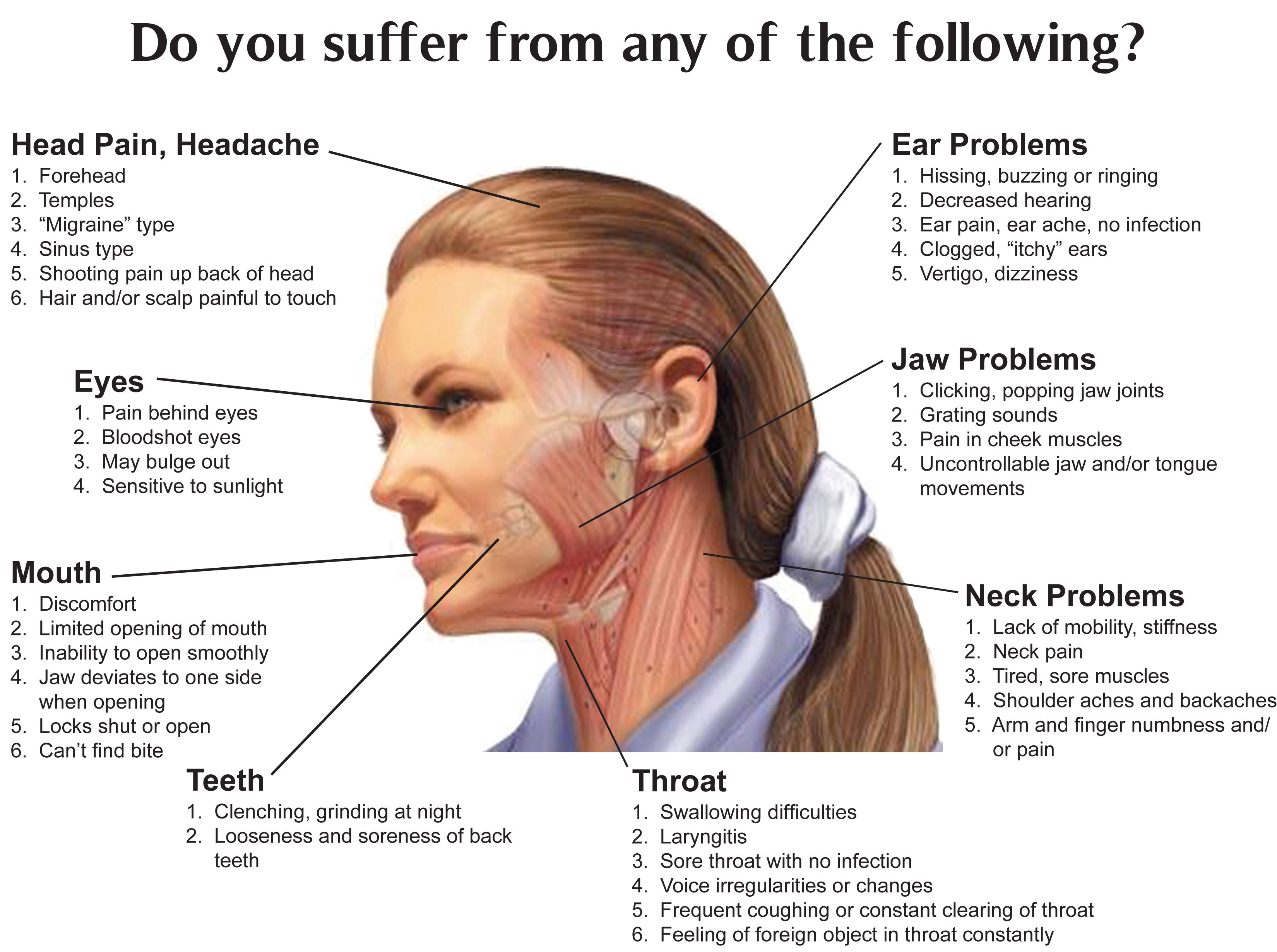
Stand tall: Holding your head erect can help drain your middle ear.
Fresh air: Smokers should refrain from smoking inside the house or anywhere near your child.
Top Picks
Drops for inflammation of the ear, treatment of otitis with ear drops
There are many diseases affecting the hearing organs. However, it is primarily a childhood infection and is the most common childhood infection for which antibiotics are prescribed 1 .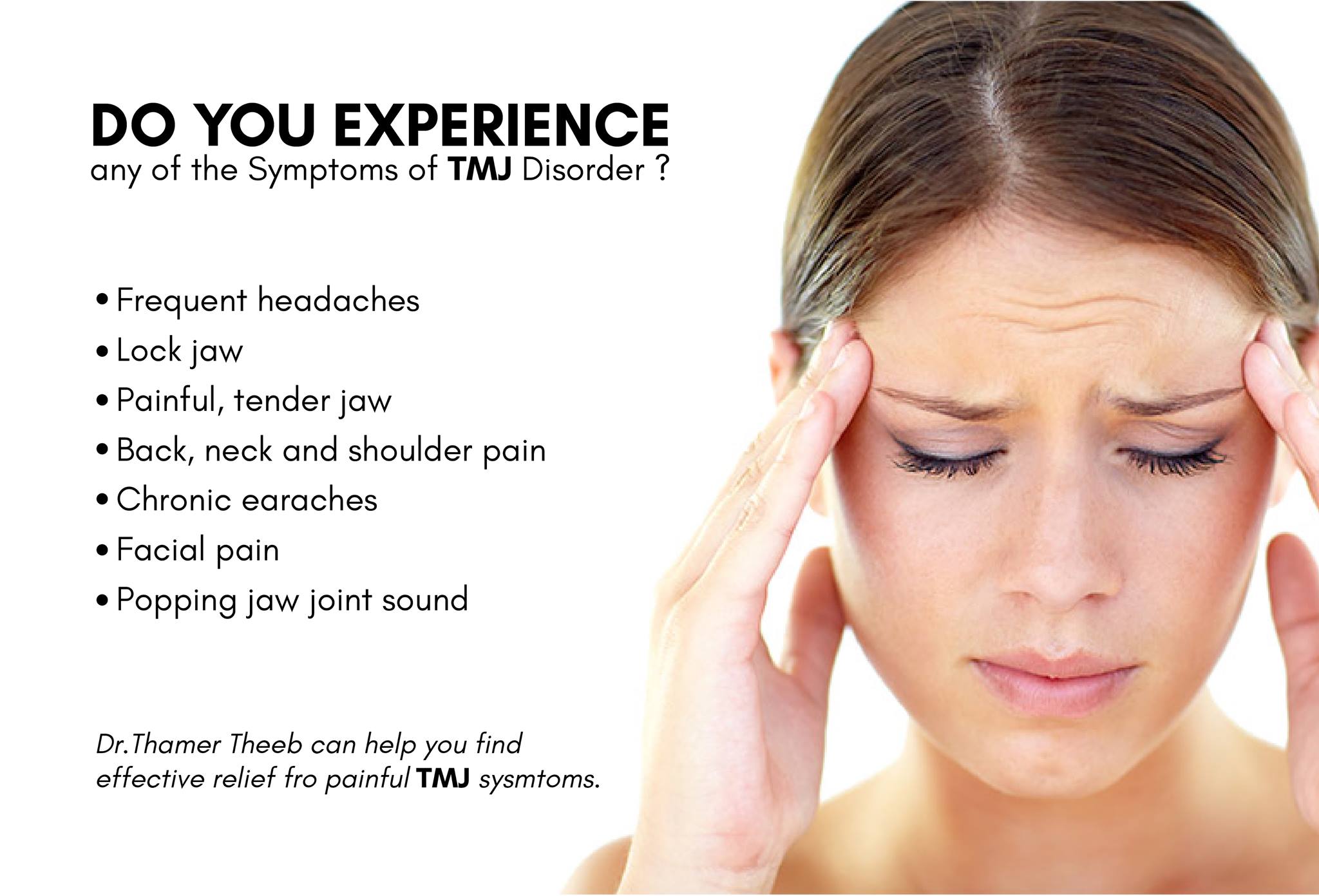 When this disease is detected, the otolaryngologist prescribes various drugs and medicines, among which there may be local remedies, including antibiotics, antiseptics, glucocorticoids, etc.
When this disease is detected, the otolaryngologist prescribes various drugs and medicines, among which there may be local remedies, including antibiotics, antiseptics, glucocorticoids, etc.
But with the wrong choice of drug, as well as due to non-compliance with the dosage, the treatment may be ineffective and lead to hearing loss and balance dysfunction 2 .
First of all, you need to see a doctor so that he can determine the degree of the inflammatory process. Depending on the affected department, there are three types of this disease:
- External . The disease can occur as a result of water entering the lumen of the auditory canal (which is why it is often called “swimmer’s ear”), traumatic injuries or the presence of a foreign body 3 .
- Medium . The risk factor is an increase in the incidence in the autumn-winter months due to the activity of respiratory viruses 4 .

- Internal (labyrinthitis) can rarely occur due to both acute and chronic ear infections and presents with nausea, vomiting, dizziness, tinnitus and hearing loss 1 .
Types and features of ear drops for otitis externa
Proper application of topical agents to the site of infection is a key element in the effective treatment of otitis externa 2 .
In modern medicine, the following types of such drugs are distinguished:
- antibiotics – topical antibiotics are highly effective in treating otitis externa 2 ;
- glucocorticoids – topical glucocorticoids reduce inflammation resulting in relief of itching and pain relief 2 ;
- antiseptics and acidifying solutions – antiseptics such as alcohol and acetic acid have broad spectrum antimicrobial activity 2 .
However, these medicines are not completely safe. Each local medication has contraindications and side effects. Therefore, it is necessary to carefully treat the medicine and strictly follow the rules of administration.
Each local medication has contraindications and side effects. Therefore, it is necessary to carefully treat the medicine and strictly follow the rules of administration.
How to use drops for ear infections?
Such a medicine is not universal, so there is no single rule for their use. Depending on the stage of the disease and the components of the drug, different dosages are used.
For example, you can read the instructions for Otipax® ear drops for ear inflammation, which are suitable for both children and adults. This remedy is actively used for pain in the middle ear, as well as for viral or barotraumatic otitis media. It belongs to the group of anti-inflammatory drugs, as it effectively relieves pain. Otipax® acts very quickly: the pain begins to disappear within 5 minutes after instillation, and after 15 minutes, the inflammatory process decreases. It consists of two components – phenazone and lidocaine. The first reduces the temperature and relieves inflammation, and the second has an analgesic effect. These medicines work long enough, so you should not bury it often. 4 drops 2-3 times a day are enough to get rid of otitis media as quickly as possible. On average, the course of treatment takes 10 days 5 .
These medicines work long enough, so you should not bury it often. 4 drops 2-3 times a day are enough to get rid of otitis media as quickly as possible. On average, the course of treatment takes 10 days 5 .
OTIPAX® drops can be purchased at various pharmacies throughout Ukraine. You just need to follow the link and select your city. However, before using them, be sure to consult your doctor.
References:
06, 2022.
2. Laura A Goguen, MD Marlene L Durand, MD; “External otitis. Treatment”, UpToDate, Literature review current through: Jul 2022. | This topic last updated: Jul 13, 2022.
3. Otorhinolaryngology Secrets, Bruce W. Jafek; Bruce W. Murrow; BINOM Publishing House LLC; second scientific edition; Art. 82-93.
4. Acute otitis media in children: Epidemiology, microbiology, and complications. UpToDate. Stephen I Pelton, MDPaula Tähtinen, MD, PhD.
5. Instructions for the medical use of Otipax®.
Otipax 016 25.08.22
OTC drugs for ear pain in pharmacies
- Show:
- mesh
- list
sorting
–CheapestMost ExpensiveA to ZI to AIn stock
Results 1 – 11 sur 11
€4.92
In stock€4.96
In stock€7.08
In stock€6.63
In stock€6.63
In stock€4.91
In stock€6.66
In stock€4.96
In stock€6.21
In stock€33.29
In stock
Showing 1 – 11 of 11 items:
OTC medicines for ear pain in pharmacies
Ear pain, otitis and earache
- Ear pain causes many diseases: an ear infection, a cold, a sinus or throat infection, an ear canal injury, or even a tooth abscess.

- Ear pain is the clinical manifestation of a painful manifestation localized in the ear. Ear diseases affect three parts, namely the outer ear, middle ear and inner ear. The disease that usually affects this organ of hearing is ear infection .
- Otitis is inflammation of the ear. Often occurs as a result of colds or pharyngitis . Otitis media is caused by a virus or bacteria. Symptoms of ear infections often present as ear congestion , fever and varying degrees of pain . Your doctor may also prescribe Ear Drops with a local anesthetic to relieve the pain of otitis externa.
- As in children, ear infections and pain localized in the ear always warrants a medical consultation to determine the cause and appropriate treatment by otoscopy.
How to relieve ear pain?
First, it is important to determine the cause of the pain in the ear, otherwise known as otalgia.
- Determine the cause of the ear pain (cold, throat, teeth, etc.) and the type of otitis media.
- Take appropriate ear pain medication (prescription).
- Keep your ears clean
Otitis media and ear pain: what is the cure for ear pain
Most ear pain is caused by otitis media, which is an inflammation or infection of the ear. Less commonly, the pain may be caused by a sinus infection or a sore throat.
What are the types of ear infections?
Order OTC Ear Pain Medicines from ARS Approved Online Bio Pharmacy. To relieve the symptoms of otitis media , internal, external or secondary, it is recommended to take painkillers. Usually, the attending physician or ENT prescribes paracetamol or ibuprofen up to 4 grams per day. It is also indicated to take an anti-inflammatory drug for ear pain ( Advil or Nurofen) up to 1200 mg per day. .
Otitis media
Acute otitis media.
 Acute otitis media is a bacterial or viral infection of the middle ear that usually accompanies an upper respiratory tract infection. Acute otitis media (AOM) is characterized by a purulent effusion located in the eardrum. Paracetamol is the gold standard for pain management in acute otitis media.
Acute otitis media is a bacterial or viral infection of the middle ear that usually accompanies an upper respiratory tract infection. Acute otitis media (AOM) is characterized by a purulent effusion located in the eardrum. Paracetamol is the gold standard for pain management in acute otitis media.
Serous otitis media: Serous otitis media is an effusion into the middle ear resulting from incomplete healing of acute otitis media or obstruction of the Eustachian tube without infection. A decongestant such as phenylephrine (in older children and adults) may be taken to relieve nasal congestion on the advice of a physician. People from otitis media scuba diving and air travel should be avoided. Changes in ambient pressure in this case cause pain and injury to the ear.
Chronic otitis media: inflammation of the mucous membrane persists for more than 3 months. Chronic otitis media results from several infectious episodes and is often characterized by tympanic membrane perforation or otorrhea.
 In case of perforation of the eardrum, it is recommended to protect the ears from water ingress. In chronic suppurative otitis media, doctors prescribe ear drops containing an antibiotic. People with severe exacerbations are also given oral antibiotics. When piercing the eardrum, it is dangerous to put anything in the ears. You will need to wait for your doctor’s consultation before injecting an ear solution such as Otipax Ear Instillation Solution.
In case of perforation of the eardrum, it is recommended to protect the ears from water ingress. In chronic suppurative otitis media, doctors prescribe ear drops containing an antibiotic. People with severe exacerbations are also given oral antibiotics. When piercing the eardrum, it is dangerous to put anything in the ears. You will need to wait for your doctor’s consultation before injecting an ear solution such as Otipax Ear Instillation Solution.
Otitis media or labyrinthitis
Otitis media is the result of an adverse development of acute otitis media. The treatment should then be adapted to the type of otitis media diagnosed. So we will treat differently:
- bacterial otitis media due to high doses of antibiotics, sometimes combined with surgery to remove accumulations of pus in the vestibule or calculus
- viral otitis media cause-specific antivirals (different for influenza, varicella or zoster virus)
- inflammatory otitis media caused by anti-inflammatory drugs or cortisone derivatives
9 0158 Otitis externa
Otitis externa is an infection of the skin of the external auditory canal, which is sometimes purulent. Otitis externa is a pathology that occurs mainly in summer, as heat and humidity contribute to it. This ear pain most often affects young children, whose external canal is narrower.
Otitis externa is a pathology that occurs mainly in summer, as heat and humidity contribute to it. This ear pain most often affects young children, whose external canal is narrower.
Pharmacist’s advice on how to properly clean and protect your ears
In addition to taking pain relievers for ear pain, it is also important to practice good ear hygiene.
- For example, you can use ear sprays to immediately disinfect and soothe pain.
- Reduce the pressure in your ears, for example by staying indoors or sitting
- Use in-ear headphones to protect your ears from outside aggression.
- Use the ear cleaner to clean your ears without damaging your ear canal.
Good to know: more serious manifestations of ear pain require the intervention of an ENT doctor who can make a complete diagnosis. Also check out our blog for tips on natural herbal remedies for ear infections.
Also discover our liquid essential oil preparation for the treatment of otitis.


 2 F (39 C)
2 F (39 C)

 Acute otitis media is a bacterial or viral infection of the middle ear that usually accompanies an upper respiratory tract infection. Acute otitis media (AOM) is characterized by a purulent effusion located in the eardrum. Paracetamol is the gold standard for pain management in acute otitis media.
Acute otitis media is a bacterial or viral infection of the middle ear that usually accompanies an upper respiratory tract infection. Acute otitis media (AOM) is characterized by a purulent effusion located in the eardrum. Paracetamol is the gold standard for pain management in acute otitis media.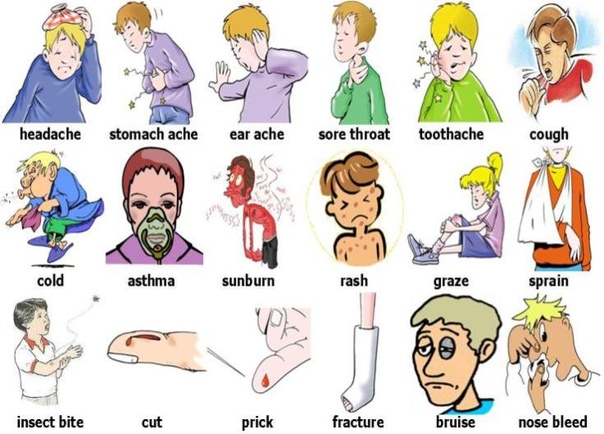 In case of perforation of the eardrum, it is recommended to protect the ears from water ingress. In chronic suppurative otitis media, doctors prescribe ear drops containing an antibiotic. People with severe exacerbations are also given oral antibiotics. When piercing the eardrum, it is dangerous to put anything in the ears. You will need to wait for your doctor’s consultation before injecting an ear solution such as Otipax Ear Instillation Solution.
In case of perforation of the eardrum, it is recommended to protect the ears from water ingress. In chronic suppurative otitis media, doctors prescribe ear drops containing an antibiotic. People with severe exacerbations are also given oral antibiotics. When piercing the eardrum, it is dangerous to put anything in the ears. You will need to wait for your doctor’s consultation before injecting an ear solution such as Otipax Ear Instillation Solution.